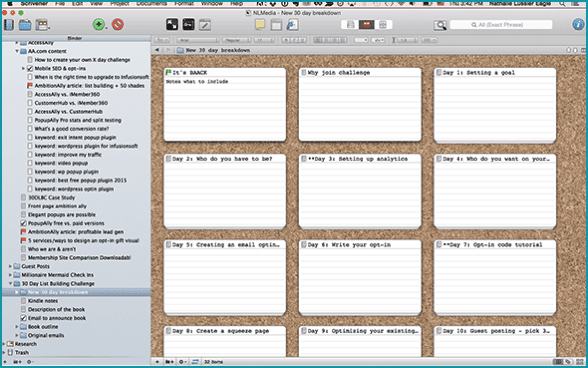Introduction and Overview: Building Your Course Foundation
Creating an online course isn’t just about recording videos and uploading content – it’s about crafting an experience that genuinely transforms your students’ lives while building a sustainable business. When done right, your course becomes more than just another digital product – it becomes a powerful vehicle for change that serves both you and your students.
Think of course creation like building a house. You wouldn’t start by picking out curtains or paint colors. Instead, you’d begin with architectural plans, foundation work, and ensuring the structure is sound. The same principle applies to course development. Your foundation consists of two critical elements: thorough market research to validate your course concept and a well-structured framework that guides students toward their desired outcomes.
| Plan | Features | Best For |
|---|---|---|
| Starter | Basic course creation | New course creators |
| Professional | Advanced features + integrations | Growing businesses |
| Enterprise | Full customization + support | Large organizations |
Market research helps you understand your ideal students’ true needs, pain points, and aspirations. This isn’t just about identifying what topics interest them – it’s about uncovering the specific transformation they’re seeking and the obstacles preventing them from achieving it. Through surveys, interviews, and community engagement, you’ll gather invaluable insights that shape every aspect of your course.
Your course framework is equally crucial. This is where you map out the student journey, breaking down complex topics into digestible modules and ensuring a logical progression that builds confidence and competence. A solid framework prevents overwhelm, maintains engagement, and dramatically increases completion rates.
In the following sections, we’ll dive deep into both market research strategies and framework development techniques. You’ll learn practical approaches to validate your course idea, structure your content effectively, and create an experience that delivers real results for your students while establishing your authority in your field. Let’s begin by exploring how to conduct meaningful market research that informs every aspect of your course design.
Foundation Concepts and Planning
Before diving into course creation, you need to establish rock-solid foundations that will support your entire educational framework. When done right, this initial planning phase becomes the backbone of a course that truly transforms your students’ lives while building a sustainable business for you.
Start by deeply understanding your target audience’s pain points and aspirations. This goes beyond basic demographics – you want to uncover their specific challenges, what keeps them up at night, and what success looks like to them. Conduct informal interviews with potential students, engage in relevant online communities, and analyze questions people are already asking in your niche. This research will shape every aspect of your course, from content structure to pricing strategy.
Next, map out your course’s transformation journey. What specific, measurable outcomes will students achieve? Break down the major milestones they’ll need to reach and identify potential roadblocks they might encounter. This becomes your course’s north star, guiding all future content decisions and ensuring every lesson serves a clear purpose in the student’s progression.
Consider your teaching methodology carefully. Will you focus on step-by-step tutorials, case studies, project-based learning, or a combination? Your audience’s learning preferences should influence this decision. For instance, busy professionals might prefer bite-sized modules they can complete during lunch breaks, while creative entrepreneurs might benefit from longer, workshop-style sessions.


Think about the practical elements too. What technology stack will you need? How will you deliver content – through video, written lessons, audio, or interactive exercises? Plan for engagement tools like workbooks, templates, or community features that will support your students’ learning journey. Remember that simplicity often leads to better completion rates than overwhelming students with too many tools or platforms.
| Feature | Benefit | Use Case |
|---|---|---|
| Drip Content | Increases engagement | Course progression control |
| Quiz & Assessments | Validates learning | Student progress tracking |
| Certificates | Motivates completion | Professional development |
| Community Access | Builds loyalty | Student interaction |
Finally, develop a clear framework for measuring success. Define key metrics beyond just course sales – consider completion rates, student results, testimonials, and long-term engagement. This data will help you continuously refine your course and demonstrate its value to future students. Creating a course isn’t just about sharing knowledge; it’s about architecting an experience that consistently delivers meaningful results.
Step-by-Step Implementation Guide
Let’s break down the course planning process into manageable steps that will set you up for success. When done right, your market research and framework development will create a solid foundation that supports both your students’ success and your business goals.
Start by conducting thorough market research. Spend at least 2-3 weeks interviewing potential students and analyzing their responses. Focus on understanding their specific pain points, desired outcomes, and the language they use to describe their challenges. Record these conversations (with permission) and look for patterns in the problems they’re trying to solve.
Next, map out your student’s transformation journey. Begin with their current state (where they are now) and clearly define their desired end state (where they want to be). This becomes your course’s north star. Break down the major milestones they’ll need to achieve along the way, and identify potential obstacles they might face. This exercise helps you develop a curriculum that addresses real needs rather than assumed ones.
Create your course framework by organizing your content into logical modules. Think of each module as a stepping stone – it should build upon previous knowledge while preparing students for what’s ahead. A good rule of thumb is to include 4-6 core modules, with each module containing 3-5 lessons. This structure keeps students engaged without overwhelming them with too much information at once.
Develop your content delivery strategy by considering your students’ learning preferences and time constraints. If you’re teaching busy professionals, you might want to break lessons into 10-15 minute segments. For more complex topics, consider including both video demonstrations and written guides to accommodate different learning styles. Remember to build in action steps and implementation exercises after each major concept.
Before finalizing your framework, create a beta testing plan. Identify 5-10 ideal students who match your target audience and invite them to review your outline. Their feedback will be invaluable in refining your course structure and identifying any gaps in your content. Consider offering them a discounted rate or special bonus in exchange for their detailed feedback and testimonials.
Finally, establish your success metrics. Define what course completion looks like and how you’ll measure student progress. Set up checkpoints throughout the course where students can evaluate their advancement, and create a system for collecting feedback at these crucial moments. This data will help you continuously improve your course and demonstrate its value to future students.
Advanced Strategies and Techniques
When developing your course framework, it’s essential to go beyond basic market research and dive into advanced strategies that will truly set your program apart. One powerful approach is to create detailed student personas based on psychographic data, not just demographics. This means understanding your ideal students’ fears, aspirations, learning styles, and daily routines to craft content that resonates on a deeper level.
Consider implementing a multi-modal learning framework that caters to different learning preferences. While many creators focus solely on video content, you’ll want to incorporate written materials, interactive exercises, audio lessons, and practical assignments. This comprehensive approach ensures better knowledge retention and higher completion rates. When done right, this variety keeps students engaged throughout their learning journey.
Another advanced technique is to build what I call “transformation touchpoints” into your course structure. These are strategic moments where students can clearly see their progress and celebrate small wins. For example, if you’re teaching a business course, include milestone activities like completing their first client proposal or landing their first paying customer. These victories help maintain momentum and reduce dropout rates.
Payment flexibility can significantly impact your course’s success. While many platforms offer basic payment processing, consider using Stripe or PayPal for your course payments. The right payment system can help you implement sophisticated pricing strategies like tiered pricing, payment plans, or early-bird discounts without creating administrative headaches.
One often-overlooked strategy is building a beta testing phase into your course development timeline. Rather than rushing to launch, recruit a small group of ideal students to work through your material. Their feedback will be invaluable for identifying gaps in your content, improving the flow between modules, and fine-tuning your delivery methods. This approach might take more time upfront, but it dramatically reduces post-launch revisions and increases student satisfaction.
Remember to design your course with scalability in mind. Create systems and processes that can handle growth without requiring constant personal intervention. This might include developing automated welcome sequences, creating comprehensive FAQs, and building community guidelines that foster peer-to-peer support.
Common Challenges and Solutions
When creating your first online course, you’ll likely encounter several roadblocks that can feel overwhelming at first. One of the most common challenges is trying to include too much content in your course framework. If you’re feeling stuck in content overwhelm, remember that a focused, well-structured course often delivers better results than one packed with every piece of information you possess.
Another frequent stumbling block is misalignment between market research and course content. You might discover that what you want to teach doesn’t exactly match what your target audience needs. The solution is to create a bridge between your expertise and their desired outcomes. For example, if you’re teaching digital photography and your research shows students want to take better family portraits, don’t start with complex lighting theory – begin with practical camera settings for indoor shooting.
Many course creators also struggle with pricing strategy during the planning phase. Instead of picking a price point based on competitor research alone, focus on the transformation your course provides. Consider the time, money, or frustration your students will save by taking your course. A photography course that helps parents capture precious family moments might be worth significantly more than one that simply teaches technical skills.
Market research itself can become a bottleneck when creators get caught in analysis paralysis. The key is to set clear parameters for your research phase. Limit yourself to interviewing 10-15 potential students, analyzing 3-5 competitor courses, and spending no more than two weeks gathering data. This focused approach helps you move forward while still collecting valuable insights.
Finally, many course creators struggle with scope creep during framework development. Combat this by creating a clear course outline first and sticking to it. Think of your framework as a roadmap – while you might discover interesting side streets along the way, staying on the main route ensures your students reach their destination efficiently.
Best Practices and Optimization
When done right, your course framework should be both comprehensive and flexible enough to evolve with your students’ needs. Start by creating a clear learning path that guides students from their current situation to their desired outcome. Map out each module with specific transformation goals, ensuring every lesson builds upon previous knowledge while maintaining a manageable pace.
Your course structure needs to accommodate different learning styles. Consider incorporating a mix of video lessons, written content, downloadable resources, and interactive elements. Research from leading educational platforms suggests that courses with varied content types see up to 40% higher completion rates. The key is finding the right balance – too much variety can overwhelm students, while too little may lead to disengagement.
Assessment and feedback mechanisms are crucial for optimization. Build in regular checkpoints where students can evaluate their progress and you can gather valuable insights. This might include short quizzes, implementation exercises, or reflection assignments. Pay special attention to the first module – it sets the tone for the entire course experience and often determines whether students will continue engaging with your material.
Pricing strategy plays a vital role in your course’s success. While many creators focus solely on competitor pricing, consider your unique value proposition and transformation potential. For detailed guidance on monetization strategies, check out these proven coupon marketing ideas that can help you test different price points while building your student base.
Remember to design your course with scalability in mind. Create systems for gathering and implementing student feedback, and plan for regular content updates. Consider using a learning management system that allows you to easily modify and expand your course as needed. The most successful course creators typically review and refresh their content quarterly, ensuring it remains relevant and effective for each new cohort of students.
Case Studies and Examples
Let’s explore how successful course creators have approached their market research and framework development through three illuminating examples. When done right, this foundational work creates courses that truly resonate with students and deliver exceptional results.
Sarah, a wellness coach, initially planned to create a comprehensive “total health transformation” course. However, her market research revealed that her audience specifically struggled with stress-related eating. By narrowing her focus, she developed a targeted 6-week program addressing emotional eating patterns. The course achieved an 85% completion rate because it solved a specific, urgent problem her audience faced.
Another example comes from Marcus, a professional photographer who thought his audience wanted advanced lighting techniques. His research, which included surveys and one-on-one interviews, showed that most of his potential students actually struggled with the business side of photography. He pivoted to create a course on booking clients and pricing services, which generated three times the revenue of his previous technical courses.
For comprehensive guidance on course creation platforms, see this detailed analysis from WPBeginner Training Course Showcase.
The third case study involves a language learning platform that completely transformed its approach. Initially, they offered traditional grammar-based lessons, but their framework research showed that students wanted real-world conversation skills. They redesigned their entire course structure around practical dialogue scenarios and cultural contexts, resulting in a 40% increase in student engagement.
These examples highlight several crucial lessons: First, your initial assumptions about what your audience wants may be incorrect. Second, specific, focused solutions often perform better than broad, comprehensive courses. Third, the format and structure of your course should align with how your students prefer to learn, not just what’s convenient to teach.
The common thread among these success stories is thorough research and thoughtful framework development. Each creator took the time to understand their audience’s true needs, pain points, and learning preferences before building their courses. They weren’t afraid to pivot their original ideas when the research pointed them in a different direction, and their flexibility paid off in both student success and business growth.
Future Considerations and Conclusion
As you wrap up your course planning phase, it’s essential to consider how your course will evolve over time. When done right, your initial market research and framework development will serve as a solid foundation that can flex and grow with your business. Think of your course as a living entity that will need periodic updates to stay relevant and valuable to your students.
Consider building in feedback loops from the start – schedule regular student surveys, monitor completion rates, and track engagement metrics. This data will prove invaluable as you refine and iterate your course content. Plan for technological advances too – what works today might need updating as new teaching tools and platforms emerge. Keep space in your framework for incorporating new case studies, updated research, and evolving industry standards.
Remember that your course’s success isn’t just about the content – it’s about the transformation you provide. As you move forward with development, maintain focus on your students’ journey and outcomes. Consider creating multiple pathways through your material to accommodate different learning styles and experience levels. Think about potential upsell opportunities and complementary courses that could naturally follow your initial offering.
Your market research should remain an ongoing process, not a one-time event. Set up systems to stay connected with your target audience’s evolving needs and pain points. This might include regular community check-ins, industry monitoring, or periodic competitive analysis to ensure your course maintains its market position.
The work you’ve done in these early stages – thoroughly researching your market and developing a solid course framework – will pay dividends throughout your course’s lifetime. By taking the time to build this strong foundation, you’ve set yourself up for sustainable success and meaningful student transformations. Now you’re ready to move forward with confidence, knowing you’ve created a course framework that truly serves your audience’s needs.







